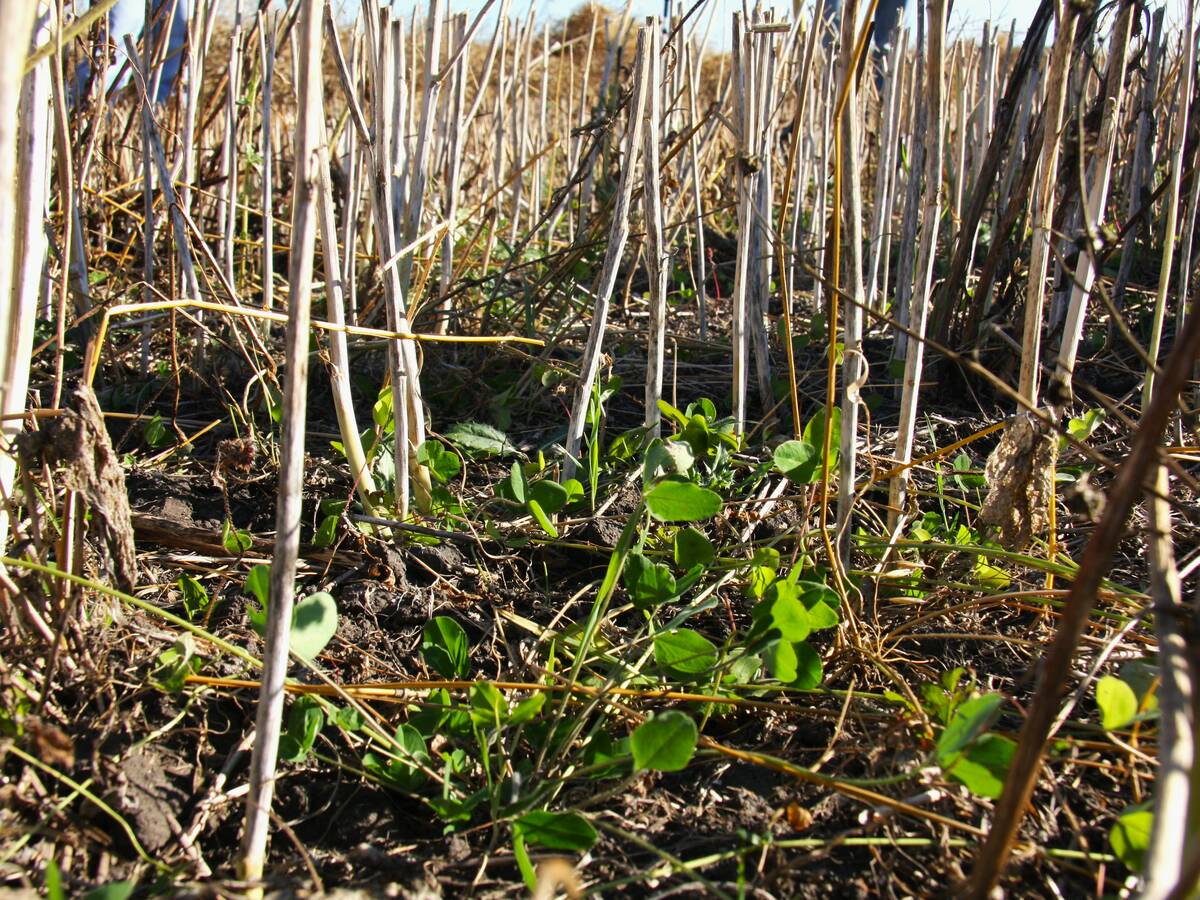The chair of Saskatchewan Pulse Growers says there is an appalling lack of federal and provincial funding for pulse crop research.
“If this current funding model for research had existed 30 years ago, there would be no canola industry in Canada,” said Lyle Minogue.
“I want to see major injection of resources into research in the pulse industry.”
Many federal government breeding programs and some provincial government programs require industry to match government funding before any work proceeds.
During an interview with reporters on the first day of the 2001 Pulse Days conference, Minogue said that matching funds requirement is one of the main reasons why the pulse industry is “grossly underfunded.”
Read Also

Saskatchewan project sees intercrop, cover crop benefit
An Indigenous-led Living Lab has been researching regenerative techniques is encouraging producers to consider incorporating intercrops and cover crops with their rotations.
In an extreme scenario, a brand new crop that shows immense promise would get no funding under the matching funds concept because no producer levies have yet been collected.
“If I grew one field of a new crop tomorrow that might be the future for the (agriculture) industry of Canada, I haven’t got five cents to go to the federal government and say, ‘Let’s get a plant breeder working on it.’ “
Minogue said it is far easier for groups like the Canadian Wheat Board and the Canola Council of Canada to attract adequate research funds because they have much larger revenue bases to start with.
Saskatchewan Pulse Growers collects levies, but has a budget generated from levies collected in 1998 when farmers grew about three million acres of pulse crops. They should be funding research based on nine million acres, which is where the producer group believes acreage will be in 2005.
The lag between collecting the levies and using them to fund breeding programs under the matching funds concept is hurting the pulse industry.
But Minogue says there are two other problems with research in this country.
In 1995 the federal government slashed Agriculture Canada’s research budget, forcing the agency to focus its dollars on centres of excellence.
“Their centres of excellence did not include lentils and chickpeas. As a result we have no money going into breeding programs in lentils and chickpeas.”
The third problem is that there is reluctance on the part of research institutions to switch their breeding programs over to new crops.
He cited the University of Saskatchewan’s Crop Development Centre as a prime example of this inertia.
Minogue said the centre devotes nine percent of its research budget to pulse crops, but pulses accounted for 22 percent of Saskatchewan’s acreage last year. Since the centre doesn’t do canola research, he figures pulse crops should get about one-third of the budget instead of nine percent.
The pulse industry is taking steps to improve the way its research dollars are spent.
Saskatchewan Pulse Growers and Pulse Canada recently established Pulse Canada Research. The organization will be identifying the gap between what is being done and what should be done in pulse research and how to best spend the meagre research money that is out there.















